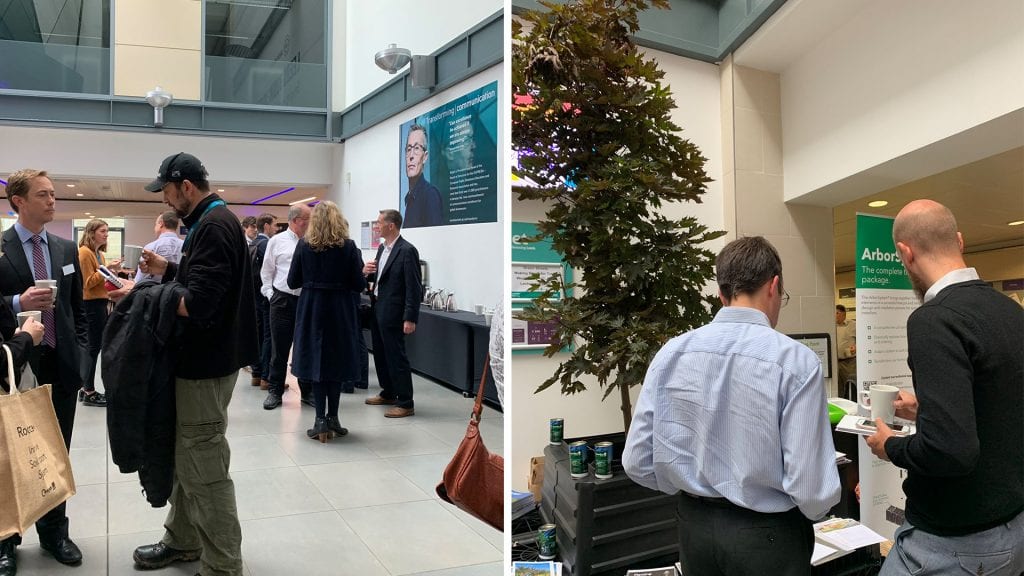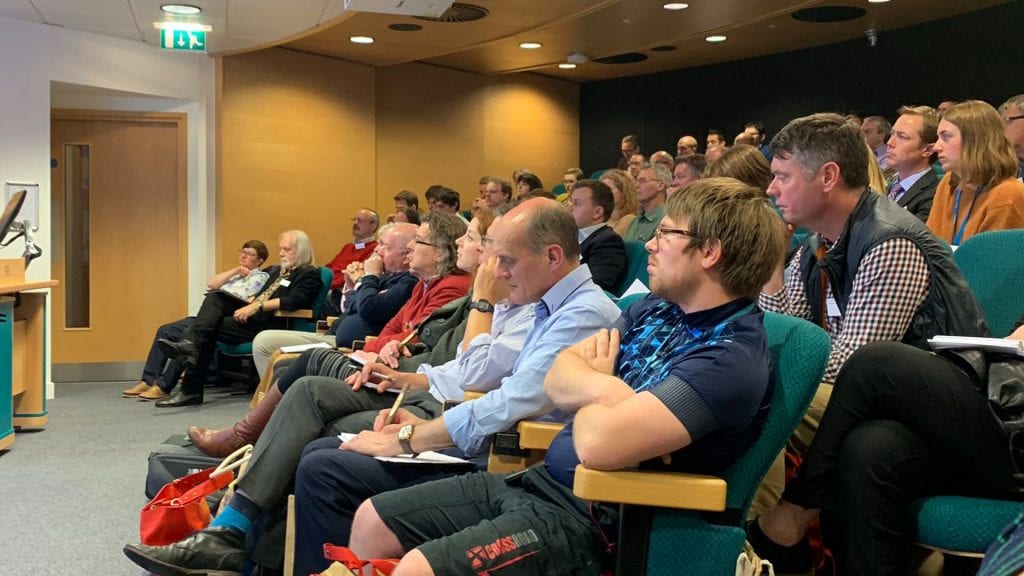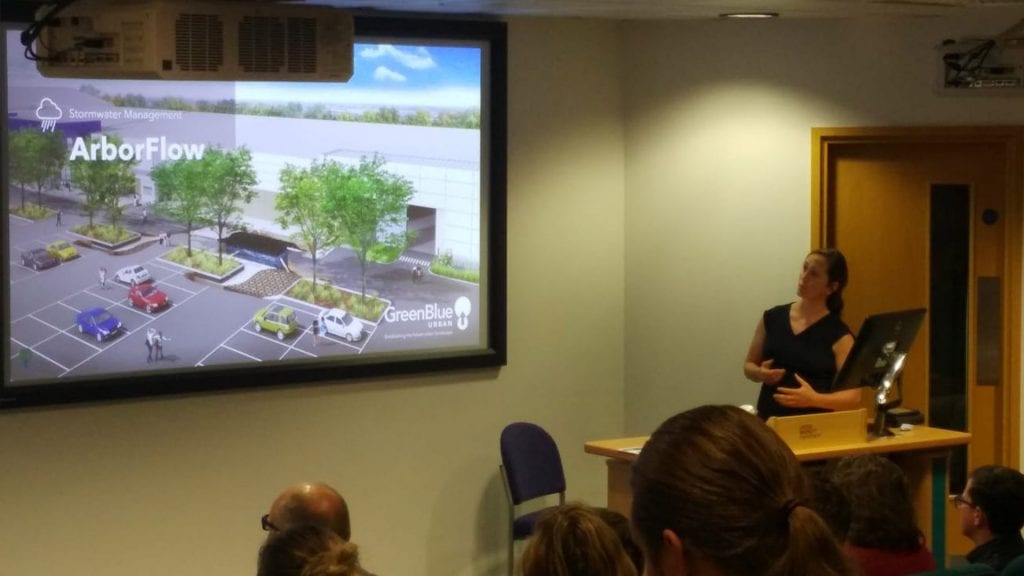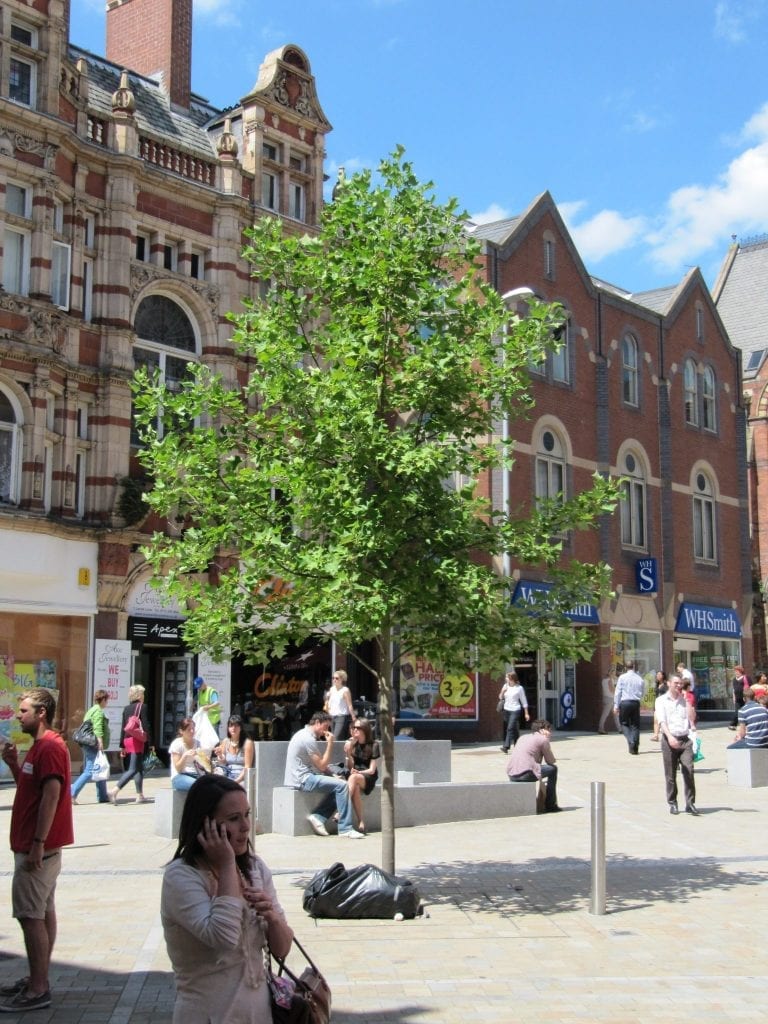In collaboration with Leeds City Council, Professor Alan Simson the Institute of Chartered Foresters and GreenBlue Urban were delighted to deliver another successful roadshow focused on the ‘Green Streets Principles’ that have been adopted by Leeds, Kirklees council and other adjacent local authorities. The event was designed to highlight the importance of considering the requirements of green and blue infrastructure. We often find that the competing requirements of ‘nature’ and the highways and streets of our towns and cities result in schemes that do not deliver the ecosystems services that they could and most importantly, that the management of our below-ground infrastructure, results in poor above ground design and aesthetics. This seminar, therefore, was an opportunity for practitioners from across the public and private sectors to come together to reflect upon historic practices to delivering ‘green streets’ and to consider the future approaches that can be utilised to deliver increased canopy cover and a wider range of co-benefits to our urban environment.

The highways and streets of our towns and cities play such a vital role in creating the corridors for people and wildlife to traverse our urban environments and are also a key consideration in the development of strategic approaches to urban greening and stormwater management.
It is with this in mind that the event was specifically designed to incorporate speakers focused on both the design and implementation aspects of urban tree planting and SUDs in highways projects.
The inimitable Professor Alan Simson was esteemed Chair for the event and provided an engaging overview of why urban trees are so vitally important, taking the audience through a rich range of global exemplar. He emphasised that whilst we are delivering innovative and creative approaches across borders, we still have a long way to go to ensure that we leave a quality legacy for future generations.

Glenn Gorner MICFor from Leeds City Council set the context for the Green Streets vision, focusing specifically on the provision of adequate volumes and quality of soil. He showcased numerous schemes in which engineered soil cell systems had been utilised to enable an adequate underground environment for the trees even in constrained highways and city centre projects in which traffic, utilities and poor-quality topsoil are common place. Glenn has been proactive in his approach to engaging with consultants delivering major infrastructure projects to ensure that the right technical solutions for tree pits and the sustainable urban drainage are integrated into the design at the earliest opportunity.
Anna Gugan from the University of Leeds provided an overview that beautifully complemented Glenn’s overarching vision for Leeds. She highlighted the importance of ensuring that trees reach maturity in order to deliver the range of benefits which provide citizens with tangible benefits. It was clear from the empirical data she presented, a local test site from the University of Leeds campus, that the efficacy of trees in delivering stormwater attenuation, carbon sequestration and improving air quality can only be realised if they have the maturity, the canopy cover that enables them to deliver such functions optimally. Using the itree software has enabled a number of practitioners such as Anna to really add weight to arguments and show the cost/benefit of investing in the urban forest. We have also worked with Treeconomics and itree at GreenBlue Urban and we are continuously striving to advance more and more nuanced and sophisticated arguments for long term investment in engineered tree planting solutions that enable trees to achieve their full species potential, along the highway and in the most challenging of contexts.

Keith Bloomfield from Kirklees Council provided an overview of how green streets principles are being applied to the A62 improvement projects. Kirklees have been extremely forward thinking in updating policy requirements which clearly define the sorts of systems under the ground they will accept and the importance of the correct below ground principles for delivering trees in the hard landscape.
The next series of talks were all delivered by enigmatic and engaged private sector consultants working currently to realise green streets principles on live infrastructure schemes being delivered across the city. Simon Ward, Atkins went over the approaches to green infrastructure and SUDs being delivered on the ELOR project (Outer Ringroad) which worked well as a presentation that was built upon by and Carl Mendel from Mott MacDonald and Danielle Reeves from WSP. We could see how policy and the Green Streets principles had acted as a framework through which designers and engineers could be more inspired to be creative in their approaches to design, bold in their visions for success and not afraid to incorporate natural playscapes and parklands in areas most commonly associated with the day to day commutes and humdrum activities of driving A to B .

Finally, Charlotte Markey and Max Anderson from GreenBlue Urban and Innovyze respectively brought the focus more sharply towards multifunctionality and sustainable urban drainage. They brought to bear a wealth of experience working with water management specialists to provide a holistic approach to delivering natural infrastructure along the highway. Charlotte began by detailing the development of GreenBlue Urban ArboFlow SUDs tree pit and the importance of not only managing roots but storing water and adding value through delivering the amenity, biodiversity, improving the quality of water as well as removing quantity off the highway. High-quality case studies from Goldhawk Road and Greener Grangetown were showcased. Max Anderson from Innovyze provided a much needed technological approach to design. He provided a unique insight into how modelling software such as the MDSUDs package from Innovyze can enable designers and engineers to plan strategic SUDs, avoiding costly end of pipe solutions but thinking outside of the box and use the software not to restrict creativity but to use new features to model SUDs components and have increased confidence in the end result.

Conclusions and Take-Ways
So what can we conclude from the days’ proceedings? The feedback from this roadshow of over 100 attendees was extremely positive. The opportunity for multidisciplinary conversation and to penetrate the heart of the challenge that faces both local authorities and those involved with the detailed design and delivery of future schemes provides an invaluable forum for growth and innovation. It is only when we break down silos and avoid factionalism and fragmentation that co-creation of quality design can take place. Participants were enthused through their exposure to speakers whose expertise and passion for the task ahead and the event was able to draw a wide range of disciplines. We have been asked when there will be a next one. Watch out Leeds… its one of many more to support the endeavours of all urban tree and wider GI/ SUDs enthusiasts across the country. There’s more work to do yet.
